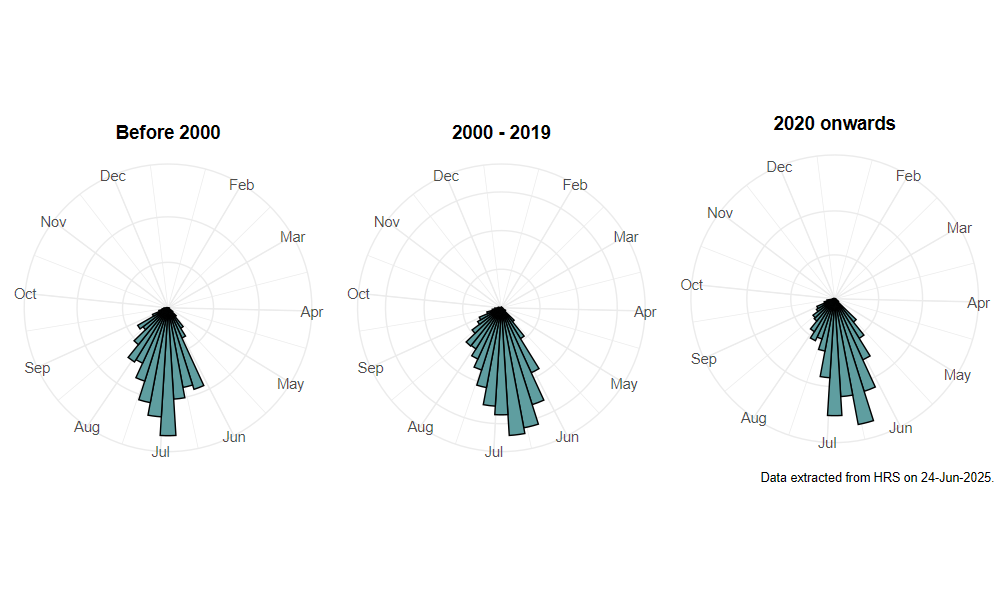Xylota sylvarum (Linnaeus, 1758)
Identification
Identification difficulty = 2. ![]()
![]() according to Ball & Morris, 20241
according to Ball & Morris, 20241
Biology
The larva feeds in soft, decaying heartwood of various trees (firs Abies sp., Beech Fagus sylvatica and Oak Quercus sp.), including deep underground in the roots. They have also been reared from decaying sawdust. It occurs in woodland and scrub, including large hedgerows. Adults are typically seen running rapidly backwards and forwards over sun-lit foliage or sun bathing on stumps and fallen branches. They rarely visit flowers.
Flight period
The following plots show the number of unique records per week excluding those reported to be of immature stages.

Distribution
Widespread and common in wooded districts throughout England and Wales, but becoming scarcer further north. In Scotland it is rather local, although widespread south of the Highlands and extends northwards to the Moray Firth.

Trends
The following plots show the Frescalo TFactor vs year and a map of the rescaled frequency (all records) for the species.
-
Ball, S., & Morris, R. (2024). Hoverflies of Britain and Ireland. WILDGuides (3rd ed.). Oxford: Princeton University Press. ↩